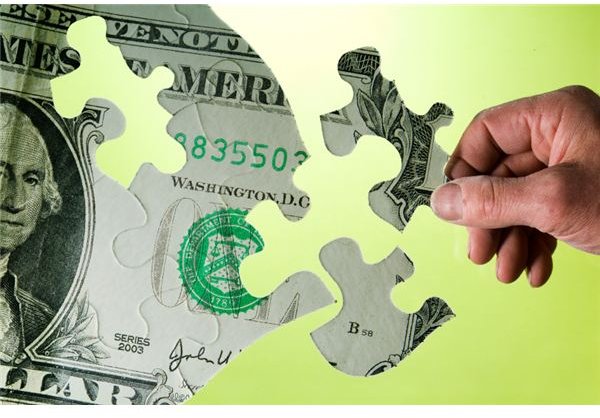Tips on How to Live on a Very Low Fixed Income
Overview
It is not easy to learn how to live on a very low fixed income but the truth is, it is possible with proper budgeting to live on whatever income you make as long as you live within your means. According to the current poverty guidelines published by the Department of Health and Human Services, a person is considered poor if one’s annual income is below $10,830. For a family, add $3,740 for each additional family member. That means a family of three is considered poor if they have to live on less than $18,210 per year.
The key to living within one’s means is proper planning and budgeting. For most people, this is a difficult task, but one way I found to simplify this process is to make a budget that is based not on some financial guru’s idea of what a budget should be, but on your own goals and dreams. This approach I learned from The Simple Dollar’s 31 Days to Fix your Finances. Therefore, instead of beating yourself up for splurging on that latte at Starbucks, ask yourself how far away your dreams are in purchasing that latte without the guilt of spending money? Or how much work time do you have to put in to be able to pay for that latte?
Bearing these things in mind, here are some key areas where you can reduce your expenses, live below your means, and begin to save toward your goals and dreams.
Housing and Associated Costs
Housing and related costs such as utilities, Internet, and phone can cut very deep into your budget if not carefully controlled. It is recommended that you should not spend more than 30% of your income on housing. For example, a single person with an annual income of $15,000 should spend not more than $300 per month on rent. So your income should drive where you live and not the other way around. You should find the best place you can live within your budget, even if that means sharing an apartment or a house with roommates.
Utility bills can be tricky and this is one cost you will have to watch closely. If you are renting, the best thing to do is find a place that has utilities included in the rent. If this is not an option, then look for an energy efficient building to rent. Other ways to reduce your utility cost is to make sure your apartment is properly insulated, use power strips, and never leave appliances on, plugged in, or in standby mode when not in use. Use energy efficient bulbs as well.
As for phone and Internet, make sure you are using the cheapest options available in your area and there are ways of doing this including bundling, using VOIP phone, and prepaid cell phones.
Image Credit: Blogs.artvoice.com
Food

The surest way of reducing how much you spend on food is to cook at home. This does not mean that you cut out socializing and dining out altogether, but you need to reduce outside meals to the barest minimum. Let’s illustrate how much you can save by making food at home versus eating out.
Let’s say it costs about $5 everyday at your favorite coffee shop for your favorite beverage and a bagel. That means you spend $150 every month on breakfast. If you buy your bagels at your local grocery store you’ll spend about 60 cents for a bagel and $18 will buy you a month’s supply. Then buy your favorite coffee brand (the brand from your favorite coffee shop, meaning the most expensive kind) for maybe $12 and this will last you a month. Add to that a $10 travel coffeemaker that comes with a travel mug and $10 in electricity costs. Now you are down $50 and spending only $40 a month for breakfast as opposed to $150 a month. At the end of one year, you will have saved $1,320 that could be used toward fulfilling one of your dreams. And this is just breakfast! Could you maybe consider significantly reducing how much you eat out?
Clothing
In order to learn how to live on a very low fixed income, you will need to take a systematic approach to how you dress and how you shop for clothes. You are better off buying things that may be a little more expensive but are of higher quality and will last longer. It is also a good idea to shop when things are on sale.
Set a monthly budget for clothing and at the end of each month, put this money aside in a reserve account, which you can then draw from when you need to shop for clothes instead of pulling out the credit card. If you care about designer brands, then shop at outlet stores instead of at main stores to cut down on clothing costs.
Finally, having a planned wardrobe will help you reduce your costs. You should make sure your clothes are coordinated so that you have colors that go together and you can mix and match various things to create the impression of a bigger wardrobe. You should also endeavor to purchase the must-haves in a wardrobe. For example, for a woman, that would be a black dress, and a man, a dark suit.
Please be sure to check out the other tips and strategies in Bright Hub’s collection of personal and household budgeting guides.
Image Credit: Villapark.org
